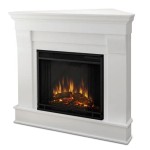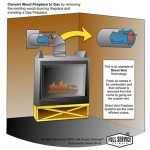Lennox Gas Fireplace Blower: Optimizing Heat Distribution and Efficiency
A gas fireplace offers a convenient and aesthetically pleasing heating solution for many homes. While the flames provide radiant heat, a Lennox gas fireplace blower significantly enhances its heating capabilities by distributing warm air throughout the room more effectively. A blower, also known as a fan kit, is an accessory integrated into the fireplace system which circulates the heated air, improving overall efficiency and comfort. Understanding the function, benefits, and maintenance requirements of a Lennox gas fireplace blower is essential for maximizing the performance and lifespan of the fireplace.
Lennox, a reputable manufacturer of heating and cooling systems, designs its gas fireplaces and blowers to work in tandem. The blower is specifically engineered to fit the dimensions and heat output of particular fireplace models. This ensures optimal airflow and prevents potential damage due to overheating or incompatible components. Failure to use a Lennox-approved blower or incorrect installation can void warranties and compromise the safe operation of the fireplace.
The core function of a gas fireplace blower is to draw cool air from the room into a chamber located near the firebox. As the air passes through this chamber, it is heated by the warmth emanating from the flames and the surrounding metal components. The blower then forces this heated air out into the room, creating a convection current that distributes the warmth more evenly than radiant heat alone. This process reduces temperature stratification, the phenomenon where hot air rises to the ceiling while the floor remains cold. By circulating the air, the blower helps maintain a consistent and comfortable temperature throughout the space.
Enhanced Heat Distribution and Comfort
The primary advantage of a Lennox gas fireplace blower is the improved heat distribution it provides. Without a blower, the heat from a gas fireplace is primarily radiant, meaning it warms objects and people directly in front of the fireplace. Radiant heat is localized and diminishes rapidly with distance. A blower, however, actively circulates the heated air, reaching corners and areas further away from the fireplace. This creates a more uniform temperature across the entire room, eliminating cold spots and enhancing overall comfort.
This enhanced distribution is particularly beneficial in larger rooms or open-concept living spaces. A single gas fireplace, even with a significant BTU (British Thermal Unit) rating, may struggle to adequately heat a large area relying solely on radiant heat. The blower assists in moving the heated air to where it is most needed, effectively increasing the fireplace's heating capacity.
Furthermore, a blower can improve comfort levels by reducing temperature fluctuations. Radiant heat can cause noticeable temperature swings, especially as the fireplace cycles on and off. The continuous airflow generated by the blower helps to moderate these fluctuations, providing a more consistent and comfortable environment.
Improved Heating Efficiency and Energy Savings
While a blower requires electricity to operate, it can contribute to overall energy savings by improving the efficiency of the gas fireplace. By distributing heat more effectively, the blower allows the fireplace to heat the room faster and maintain the desired temperature with less fuel consumption. Rather than constantly running at full capacity to combat cold spots, the fireplace can operate more efficiently, resulting in lower gas bills.
The enhanced heat distribution reduces the need for supplemental heating sources, such as electric space heaters or the central heating system. By relying more on the gas fireplace with the blower, homeowners can offset the use of more energy-intensive heating methods, leading to potential cost savings. The efficiency gain is most pronounced in well-insulated homes where heat loss is minimized.
The use of a blower also allows homeowners to lower the thermostat setting on their central heating system. Even a small reduction in the thermostat setting can result in significant energy savings over the heating season. By supplementing the central heating system with the gas fireplace and blower, homeowners can enjoy a comfortable home environment while reducing their overall energy consumption.
Maintenance and Troubleshooting of Lennox Gas Fireplace Blowers
Like any mechanical component, a Lennox gas fireplace blower requires regular maintenance to ensure optimal performance and longevity. Neglecting maintenance can lead to reduced airflow, increased noise, and eventual failure of the blower motor. Simple maintenance tasks, such as cleaning and lubrication, can significantly extend the lifespan of the blower and maintain its efficiency.
One of the most common maintenance tasks is cleaning the blower fan blades. Over time, dust and debris can accumulate on the blades, reducing airflow and causing the blower to work harder. To clean the blades, first disconnect the fireplace from the power supply. Then, carefully remove the access panel to the blower compartment. Use a soft brush or vacuum cleaner with a brush attachment to gently remove the dust and debris from the fan blades. Avoid using harsh chemicals or solvents, as these can damage the blower motor or other components.
Another important maintenance task is lubricating the blower motor. The motor contains bearings that require lubrication to ensure smooth operation. Over time, the lubricant can dry out, causing the motor to become noisy or even seize up. To lubricate the motor, use a lightweight oil specifically designed for electric motors. Apply a few drops of oil to the designated lubrication points, typically located on the motor housing. Avoid over-lubricating the motor, as excess oil can attract dust and debris.
If the blower is not functioning properly, there are several troubleshooting steps that can be taken. First, check the power supply to ensure that the fireplace is receiving electricity. Next, check the blower switch or thermostat to ensure that it is set to the appropriate setting. If the blower still does not work, check the wiring connections to ensure that they are secure. A loose connection can prevent the blower from receiving power. If none of these steps resolves the issue, it may be necessary to consult a qualified HVAC technician to diagnose and repair the blower.
Common problems also include a noisy blower. This can be caused by several factors, including loose fan blades, worn bearings, or an obstruction in the blower compartment. If the fan blades are loose, tighten the screws or bolts that hold them in place. If the bearings are worn, they may need to be replaced. If there is an obstruction in the blower compartment, remove it carefully. Another frequent issue is reduced airflow. This can be caused by dirty fan blades, a clogged air filter, or a malfunctioning blower motor. Clean the fan blades and replace the air filter, if applicable. If the airflow is still reduced, the blower motor may need to be replaced.
When replacing a Lennox gas fireplace blower, it is crucial to select a replacement that is specifically designed for the fireplace model. Using an incorrect blower can lead to overheating, reduced efficiency, and even damage to the fireplace. Consult the fireplace owner's manual or contact a Lennox dealer to determine the correct replacement blower for the specific model. Ensure that the replacement blower meets the same specifications as the original, including voltage, amperage, and airflow capacity.
When installing a new or replacement blower, follow the manufacturer's instructions carefully. Proper installation is essential for ensuring optimal performance and safety. Before beginning the installation, disconnect the fireplace from the power supply. Then, remove the access panel to the blower compartment. Carefully disconnect the wiring connections from the old blower. Install the new blower in the same location as the old blower. Reconnect the wiring connections, ensuring that they are secure. Replace the access panel and reconnect the fireplace to the power supply.
A Lennox gas fireplace blower significantly enhances the functionality of a gas fireplace. Through efficient heat distribution, energy savings, and improved comfort, the blower becomes a valuable addition to any home heating system. The integration of proper maintenance and troubleshooting techniques further ensures the longevity and optimal performance of the blower, providing years of reliable service.

Fbk 200 80l85 Blower Kit For Astria Ihp Lennox Superior Fireplaces

Lennox Oem Blower Kit For Fbk 250 Fireplace 80l86

Noisy Gas Fireplace Blower Here S How To Replace It Diy

Lennox Gas Fireplace Blower Kit H7841

Lennox Fireplace Blower Fan Kit Magnet Mounted Fbk250 Hearth Trends

Ac Infinity Airblaze T12 Universal Fireplace Blower Fan Kit With Temperature And Sd Controller For Lennox Hearth Glo Majestic Rotom Com

Fireplace Blower Fan Kit Quiet For Astria Lennox Superior Rotom Gas

Fbk 250 Fireplace Blower Kit Installation

Durablow Mfb002 B Fbk 200 Replacement Fireplace Blower Fan Kit For Len Payandpack Com

Fbk 100 Fireplace Blower Fan Kit Installation For Lennox And Superior
Related Posts








